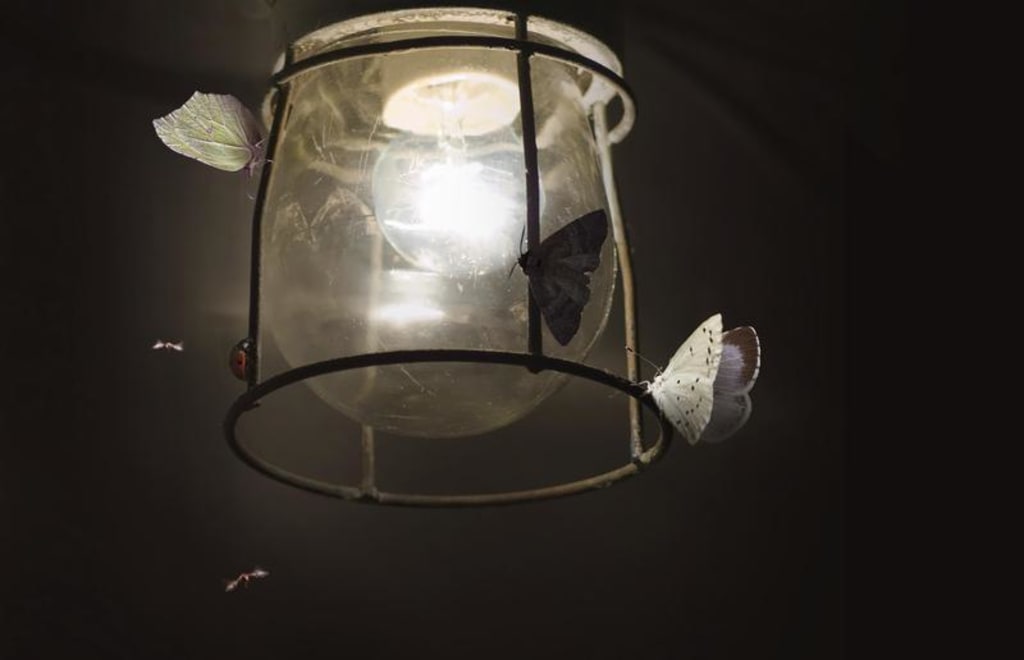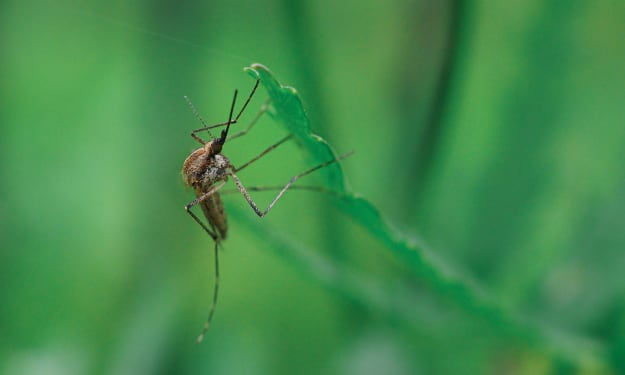The Enigma of Mosquitoes and Light: Why Do They Chase Us in the Dark?
Unraveling the Mystery of Mosquitoes' Light Obsession: Insights into Their Fascinating Behavior

Mosquitoes, those tiny, buzzing insects that have coexisted with humans for centuries, are both a nuisance and a potential health threat. Their relentless pursuit can disrupt our peaceful evenings and rob us of a good night's sleep. One of the most perplexing behaviors exhibited by these tiny creatures is their apparent attraction to light, particularly during warm summer nights when we seek solace in the darkness. The incessant hum of mosquitoes as they hover around us can be incredibly frustrating. But what drives them to pursue us so relentlessly under the cover of darkness? In this article, we will delve deeper into the mystery of mosquitoes' fascination with light and explore the scientific theories that seek to explain this behavior.
Positive Phototaxis: Seeking the Light
To understand why mosquitoes chase after light, we must first examine the concept of phototaxis. Phototaxis refers to an organism's tendency to move in response to light stimuli. In the case of mosquitoes, they exhibit positive phototaxis, meaning they are naturally drawn towards sources of light, be it natural moonlight or artificial light sources such as street lamps and household bulbs.
The Light of the Moon: A Guiding Beacon
In the natural world, moonlight plays a crucial role in the lives of mosquitoes, acting as a guiding beacon during their nocturnal adventures. Many mosquito species are crepuscular or nocturnal, taking flight under the cloak of darkness to pursue their life-sustaining activities, which include seeking nectar or, in the case of female mosquitoes, sourcing blood meals to support their reproductive endeavors. The soft glow of the moon illuminates the night sky, providing a consistent and reliable source of light that helps these tiny insects navigate through their surroundings with greater ease.
The Confounding Effect of Artificial Light
While moonlight has served as a reliable navigational tool for mosquitoes throughout evolution, the advent of artificial light has introduced a perplexing conundrum into their lives. The prevalence of electric lights in our urban landscapes has disrupted the natural cues that mosquitoes rely on for orientation. As they venture towards artificial light sources, their navigation system becomes disoriented, leading them to circle erratically around the bright lights. This behavior can be particularly disconcerting for us as we find ourselves at the center of their chaotic dance.
Confusion Between Light and Food Sources
However, their attraction to light is not solely driven by phototaxis. Another intriguing aspect of mosquitoes' behavior is their connection between light and potential food sources. Female mosquitoes, specifically those of the Aedes and Anopheles species, are blood-feeding insects, and they require the nutrients from blood to develop and lay eggs. They have evolved a remarkable ability to detect the carbon dioxide we exhale, as well as other chemical cues and body heat that emanate from potential hosts, including humans.
In the presence of artificial light, this sensitivity to human cues might lead female mosquitoes to erroneously identify the light source as a potential food source, and they will approach it with determination. Unfortunately, we often end up as collateral damage in their quest for a blood meal. Moreover, this behavior can be amplified in heavily urbanized areas where artificial lights abound, exacerbating the frequency of mosquito-human encounters.
Species Variation and Contextual Factors
It is essential to recognize that the attraction of mosquitoes to light is not uniform across all species and individual circumstances. Different mosquito species may respond differently to light stimuli, and environmental factors, such as the intensity and spectrum of light, can influence their behavior significantly. Additionally, temperature and humidity levels, as well as variations in mosquito populations, may contribute to variations in light-seeking behavior.
Evolving in a Dynamic World
The relationship between mosquitoes and light is far from simple, as it is intertwined with their survival and reproductive strategies. Throughout evolution, mosquitoes have adapted to thrive in a wide range of environments, including diverse light conditions. This adaptability allows them to exploit various ecological niches and increase their chances of survival.
The evolutionary perspective on mosquitoes' attraction to light suggests that the behavior is likely a result of a trade-off between the benefits and costs associated with their light-seeking tendencies. On one hand, the ability to navigate towards light sources can be advantageous for mosquitoes, allowing them to locate open spaces, sources of water, or resting sites during their nightly activities. On the other hand, the attraction to artificial lights in urban areas might lead them into potentially hazardous environments or increase their exposure to predators and other dangers.
Complexity of Mosquito Behavior
The intricate interplay between phototaxis, navigation, and feeding behaviors highlights the complexity of mosquito behavior. As we seek to understand their attraction to light, it becomes evident that the behavior cannot be solely attributed to a single factor. Rather, it is the result of a combination of factors and adaptive strategies that have evolved over time.
Enhancing Our Understanding for Better Mosquito Control
Understanding the mechanisms underlying mosquitoes' attraction to light can be of great value in developing effective strategies for mosquito control and disease prevention. By comprehending the environmental cues that influence mosquito behavior, scientists and public health experts can design targeted interventions to reduce mosquito-human encounters and the risk of disease transmission.
While we may not be able to completely avoid mosquito encounters, especially during warm summer nights, there are steps we can take to mitigate their impact. Employing physical barriers such as mosquito nets, using insect repellents, and ensuring proper screening of windows and doors can minimize the chances of mosquito bites. Additionally, reducing sources of standing water, which serve as breeding grounds for mosquitoes, can help decrease mosquito populations in and around our homes.
Embracing the Wonders of Nature
As we continue to ponder the enigma of mosquitoes and light, let us embrace the wonders of the natural world, including its mysterious inhabitants. By observing and respecting the complexities of mosquito behavior, we can coexist more harmoniously with these fascinating yet bothersome creatures. The dance between mosquitoes and light may remain an intriguing mystery, but our efforts to safeguard our health and well-being can inspire a newfound appreciation for the intricacies of life on our planet.
About the Creator
Johan Jaramillo
Passionate about writing articles, stories, and tales. Each word is a blank canvas that breathes life into new worlds and emotions. Writing is my sanctuary, my way of expression, and sharing my passion with the world.
Enjoyed the story? Support the Creator.
Subscribe for free to receive all their stories in your feed. You could also pledge your support or give them a one-off tip, letting them know you appreciate their work.






Comments
There are no comments for this story
Be the first to respond and start the conversation.